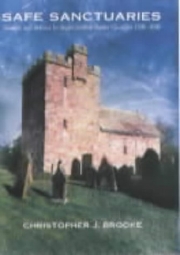A review by Peter Ryder
In the three or four centuries of turmoil that the English/Scottish Border suffered, the response of the land-owning classes is well known - namely, to build castles and towers. The rest of the population could not afford such measures; the only stone-built and relatively fire-proof building they had recourse to for defence was the village church or chapel.
This substantial volume looks at these churches. It is unusual and valuable in that its remit includes both sides of the Border. Sandwiched between a brief but useful introduction and conclusion, the bulk of its pages are in effect a gazetteer of churches and other ecclesiastical buildings in the six Border Marches (from east to west, Scottish and English in turn). The text, setting a discussion of the buildings against a backcloth of their sometimes lurid history, is very readable, and lavishly illustrated with plans, old prints and clear black-and-white photographs.
Almost all the pre-1700 churches in the area are shown to demonstrate one or other of various criteria for 'defensibility', such as thick walls, vaults, draw-bar tunnels, and evidence of domestic accommodation in western towers. Sometimes alternative interpretations may be possible. The buttressing at Kirkwhelpington, and the wall blocking the tower arch at Hartburn, for example, could be interpreted rather as attempts to prevent badly-built structures collapsing rather than defences against Scottish raiders. Even so, this is an excellent book - far superior to many of those dealing with the better known secular strongholds of the region. It is rounded off by a series of appendices and an exhaustive bibliography.








